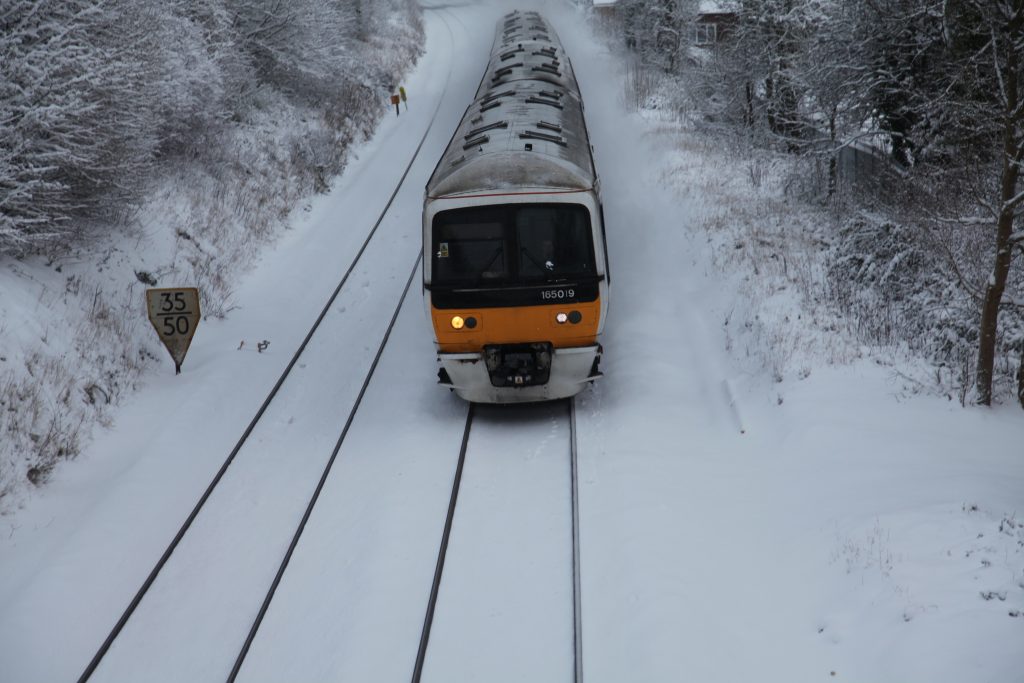Each season presents its own challenges for Network Rail, which works around the clock to keep train services running despite testing conditions.
Whereas leaf fall is the main enemy in autumn and the flowering of weeds in spring, there are a number of significant problems that Team Orange tackles in winter.
Compacted snow and ice can prevent points from working, stop power from third rail reaching trains, and when rails freeze together, signals stay red and trains are forced to stop.
Heavy snow can also make branches break off trees while very cold conditions can jam train doors shut.
Looking for a new job in the UK rail industry? Click here to begin your journey

Network Rail develops a special timetable with train operating companies (TOC) for the winter period and prepares for adverse conditions by making sure the track is clear, that there is no overhanging snow-covered vegetation, no icicles at tunnel entrances, and that spare parts are delivered where needed for assets sensitive to snow and ice. TOCs also run empty trains overnight to help keep the tracks clear of snow.
To keep ahead of the game, Network Rail also uses special weather forecasters which advise on any impending severe weather risks and a helicopter fitted with thermal imaging can be deployed to identify points heaters that aren’t working.

Once the adverse conditions have arrived, temporary speed restrictions can be put in place to minimise the risk of accidents and if a snow drift reaches 30cm or more, trains have to be fitted with snow ploughs to run safely.
Staff can also be posted to patrol at-risk assets and remove ice from overhead lines and in an extreme case, lines are closed altogether if they’re blocked.
Network Rail also has a number of cold-weather vehicles and machines which are in position at depots across Britain.
There are three types of winter de-icing train: snow and ice treatment trains (SITT), multi-purpose vehicles (MPV) and winter development vehicles (WDV).

Network Rail has 10 SITTs, which are fitted with snow ploughs, hot-air blowers, steam jets, brushes, scrapers and heated de-icer to make quick work of de-icing tracks.
Along with MPVs – of which Network Rail has 24 – SITTs are deployed to help clear snow from third rails and prevent ice from freezing to them again by spraying them with hot liquid anti-icer.
WDVs blow hot air around the running rails – specifically around points and crossings – to melt snow and ice that is stopping the points from working. The WDV is also equipped with steam lances to melt the more built-up stubborn ice deposits.
Whatever the weather, Network Rail has thorough plans in place to ensure that Britain’s railway can keep moving.
Read more: This is the most bashed railway bridge in Britain

